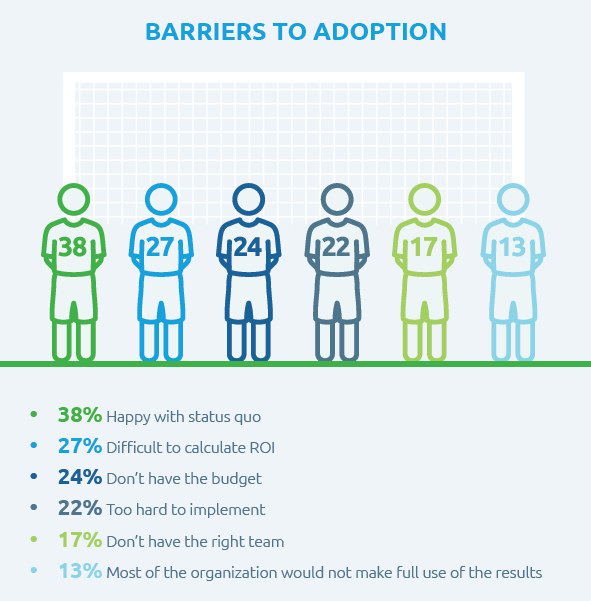
Data Opportunities Slipping Through the Cracks

(Bruce Rolff/Shutterstock)
If you’re struggling to make the most of your data, take heart in the fact that you’re not alone. A large percentage of companies are not fully executing on their big data, data science, and IoT strategies, several recent studies say. That good news is there’s lots of room for improvement.
The gap between what companies can do with data, and what they’re actually accomplishing, is not a new phenomenon. Since the dawn of business intelligence, a handful of top performers pushed the bar higher and higher for everyone.
But what we’re seeing today is different. The current explosion of data volumes and variety from the IoT, and the rapid evolution in data science tools, like graph analytics and deep learning, are putting companies on the spot to deliver results. CEOs will not be content to let other companies reap the rewards of having a successful data strategy.
There’s a lot of pressure to deliver returns on data science efforts, but success if few and far between. Nearly four out of five firms surveyed by Harvard Business Review for a recent Verizon Enterprise Solutions report on IoT and big data say they’re acting on only a limited amount of IoT data, or aren’t using any data at all. A full 51% of respondents say they’re struggling with the variety and the complexity of big data.
“Most companies don’t have the skill sets to put in place the technical infrastructure required to ingest, store, and analyze the volume of often real-time data presented by IoT,” HBR quotes Deloitte Consulting principal Andy Daecher as saying.
Despite the hype surrounding IoT, HBR acknowledges it’s still very much in the early stages of development. Most IoT projects are done on an ad-hoc basis, and few companies have an enterprise-wide strategy for IoT. There’s a long way to go before the combination of IoT data and machine learning can deliver on promises, such as improved customer service, increased revenue, new products and services, and overall business model transformation.
The common denominator linking nearly all companies is an unbroken faith in the power of data. According to Square Root’s 2017 Data Chasers survey of 500 data users, 92% of companies believe that better use of data will impact long-term success. But in reality, 40% of companies are struggling to take effective action on the data.
The culprits for this disconnect are many and varied. The Data Chasers survey identified outdated tools, too many data sources, poor data collection methods, and a need for extensive cleaning as core reasons why data projects do not succeed, despite an average of $7.4 million per year spent on them.
Some firms are spinning their wheels when it comes to data. One out of 20 retail respondents to the Data Chasers report say they’re wasting their time with data efforts. “Retail respondents were more likely to cite too many data requests, too many data sources, and poor data collection practices as major factors that lead to wasted time,” Square Root says.

Source: Square Root Data Chasers survey
In other situations, companies use data as a crutch, or even worse—completely ignore what it says. “Instead of asking for briefs and status reports, management teams rely on data alone for visibility into activities outside of their department,” Square Root says. “What’s more concerning is a staggering 41% of managers take the opposite actions proposed by the data.”
Companies eager to get on the right side of the data science eight ball can perform that time-honored tactic: emulation! By copying what successful data science teams do right, they can improve the odds of succeeding with their own efforts.
Continuum Analytics pointed out some signs of data science success in its recently published survey on the state of open data science. Unfortunately, only half (49%) of enterprises have a data science team, according to its survey. One in five companies have only one data scientists on staff, while 22% have multiple data scientists on the payroll, but they don’t work as a team.
“It’s time for enterprise leaders to acknowledge that there’s no ‘i’ in team and move beyond baby steps to build a successful data science team,” the company says.
The Continuum survey, which was conducted by Vanson Bourne and involved 200 decision makers, jibed with the Square Root survey (and many other surveys like it) in one key finding: 96% of companies agree that data science is critical to the success of the company.
However, there are other barriers to succeeding with data science beyond having the right personnel in place. The top three challenges identified by Continuum in its survey were executive satisfaction with the status quo, difficulty in calculating ROI, and budgetary restrictions.
These headwinds point to difficulty in getting data science efforts off the ground. According to C-level executives and IT managers that Continuum surveyed, only 30% said they’re making full use of data available to them, which they considered the “adult” stage. By comparison, 40% said their data science efforts were in the “teen” stage, 22% in the “toddler” stage (“we have made some initial steps, but have a long way to go”), while 9% are in the infancy of data science.
“Data Science is not a passing trend––it is the key to unlocking critical enterprise secrets––but how do companies lagging behind catch up to harness the power of data?” Continuum asked. That is the key question that everybody wants answered.
The payoff for making it all work will be fantastic, according to Tony Turni, global VP of professional services for Verizon Enterprise Solutions.
“When IoT, big data, and machine learning technologies are combined, truly magical things can happen,” he writes. “That’s when instead of just doing stuff better, faster, and often more cheaply, genuinely surprising insight emerges.”
Related Items:
Why Deep Learning, and Why Now
Data Science Platforms Seen as Difference-Makers































